Craft Omakase is Austin's best sushi restaurant (where you can actually get a reservation)
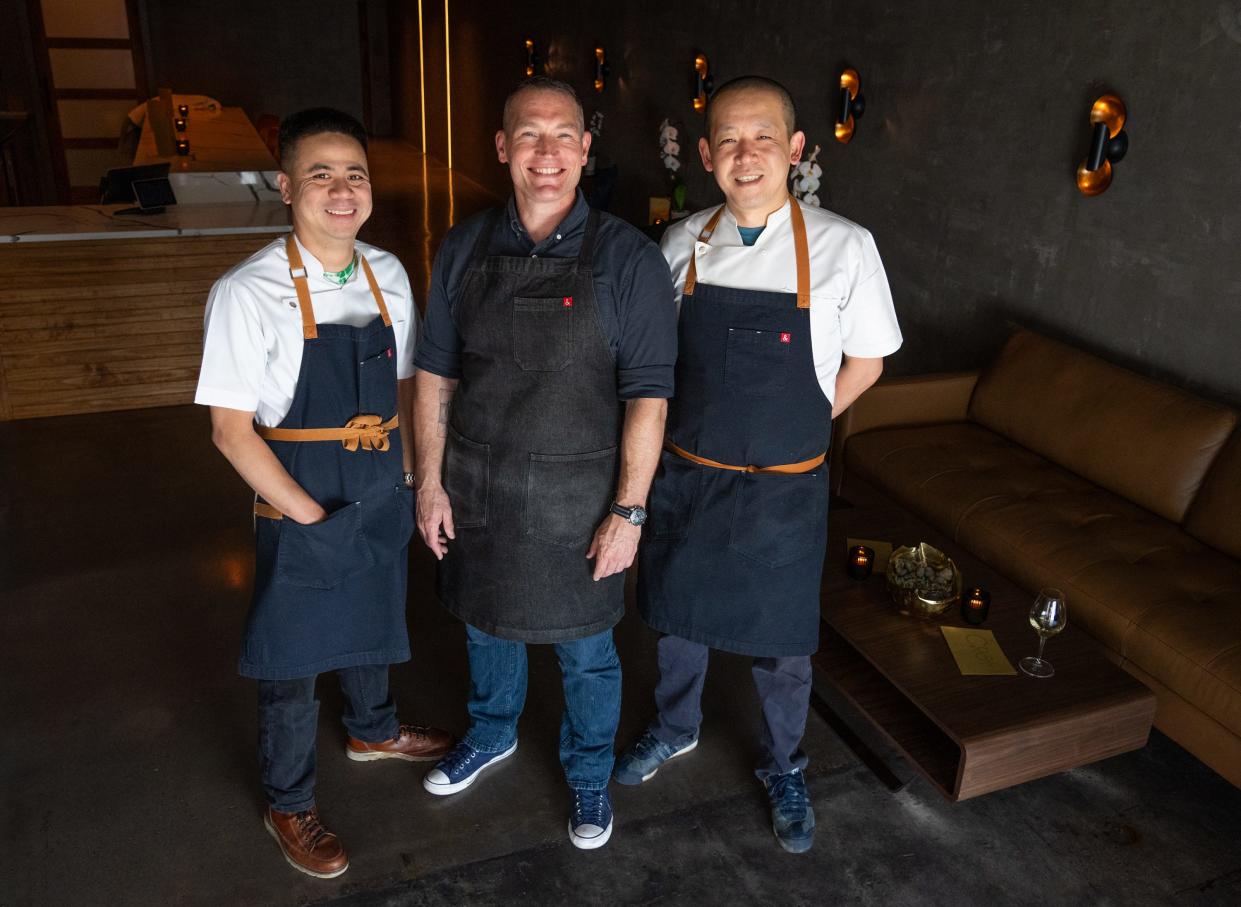
You can’t fire up a butane torch in Austin these days without singeing a sushi chef’s coat. It seems every few months a new place centered by a chef melting bone marrow or dabbing foam onto raw fish opens.
It’s a phenomenon that’s spilled inward from the coastal culinary capitals of Los Angeles and New York, where sushi restaurants and the sushi bros who animate them are legion.
The culinary shows at some places around Austin are paired with abracadabra presentation and raucous rounds of sake. It’s a vibe. Unfortunately. Which isn’t to say I have a problem with sushi. It’s one of my favorite forms of cuisine. It’s just that the muchness has become a bit much of late. I prefer a more direct, less self-important experience.
You can probably tie the recent proliferation of intimate omakase (chef’s choice) restaurants in Austin to the shift toward the desire for exclusive and experiential dining experiences. The idea of cool ain’t what it used to be, aloofness and individualism replaced with a searing icy hot heat.
Continue drawing the line and it becomes purer, piercing through the heart of the stylish and evocative 2011 documentary “Jiro Dreams of Sushi,” then back to Los Angeles and New York City of the late 1980s and eventually, of course, Japan.
But somewhere along the way, it seems to have become a little more about the show and the in-the-know speakesiness of it all and less about the sushi. That’s not the case at Craft Omakase, the best new restaurant I’ve eaten at this year in Austin and the best sushi restaurant in town where you have a reasonable shot at scoring a reservation.
(An aside: My favorite sushi restaurant in Texas is Tsuke Edomae in Mueller, though, like many sushiyas in Tokyo, your best chance of procuring a reservation at that eight seater requires being, or knowing, a long-standing regular customer, or having incredibly quick fingers and exceptional luck when reservations drop.)
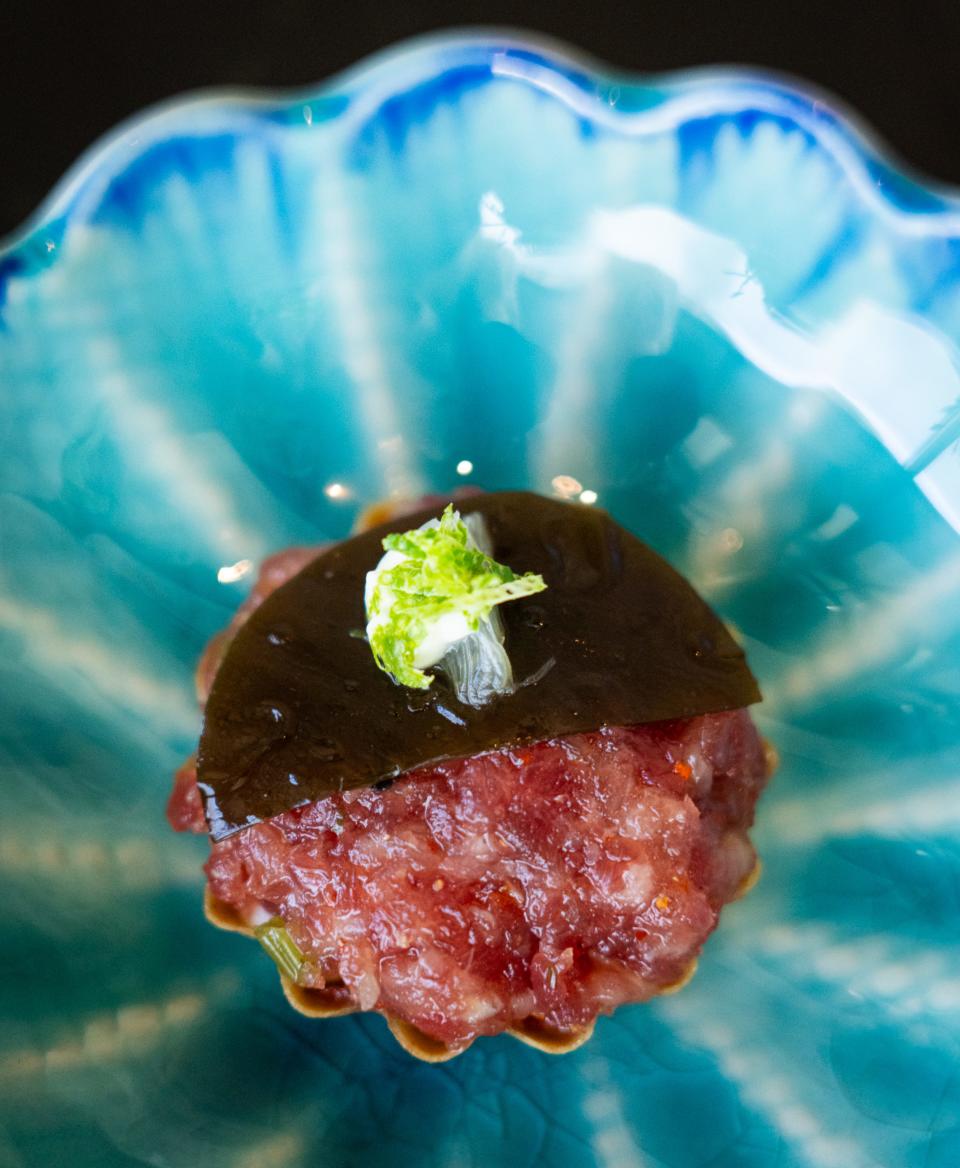
Longtime Uchiko veterans bring pedigree
Craft Omakase sits tucked in the back of a shopping center near 45th and Lamar (a corner home to the cultishly adored Chili’s) in the space once home to The Steeping Room. The restaurant sits, ironically, a chopstick fling away from Uchiko – the restaurant where most of Craft’s staff and all three partners worked for years before striking out on their own at the end of 2023.
You meet one of the trio, managing partner Tim Boyer, early in your Craft experience, as he brings you a welcome cocktail, maybe a light lemony concoction to awaken your palate, in the small lounge area on your arrival.
Boyer’s measured but joyful manner evinces his extensive experience working front of house in the Uchi empire, which set the standard for service excellence in Austin. Boyer and general manager Julianna Fry, the former bar manager at Kemuri Tatsu-Ya, are also on hand throughout dinner to guide you through a great sake list or the more modest but efficient wine offerings, should you forgo pairings that start at $75.
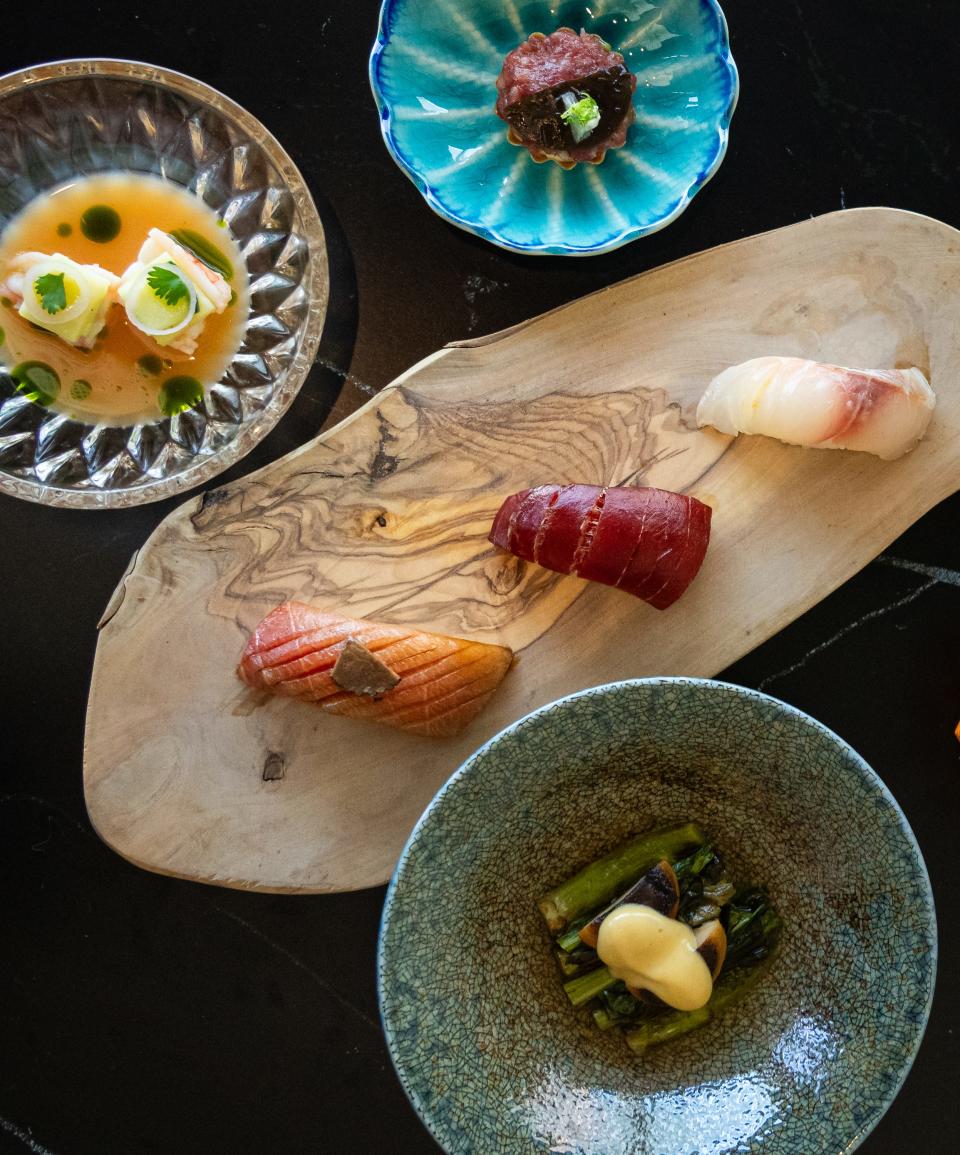
A set of doors echoing Japanese shoji slide open to reveal the compartmentalized dining space colored mostly in subdued tones with amber lighting and modern art providing pops of brightness. There is not a grand introduction of what the night has in store, no sushiya Flavor Flav to hype the sense of occasion. Instead, you are introduced to chef-owner Charlie Wang and chef-partner Nguyen Nguyen, who will prepare most of the night’s 22 courses, with two other chefs appearing from the hidden kitchen to present the occasional composed dish.
The first trio of dishes from the kitchen enliven the senses. A sizable oyster, one night tart and floral with a raspberry rose mignonette, the other pert with prosecco mignonette, is followed by the aesthetic beauty and textural contrast of a chop of bluefin tuna set atop a nori tart. Then more cream, crunch and snap from a cucumber gazpacho dotted with crispy prosciutto on an early spring visit and lush chawanmushi (egg custard) with shittake duxelle and truffle at a winter dinner.
Then Wang and Nguyen get to work crafting their nigiri. (I sat closest to Wang at each visit, so that is the lens through which I will discuss the dining experience. A serene Nguyen was only a few steps away, but we didn’t converse.)
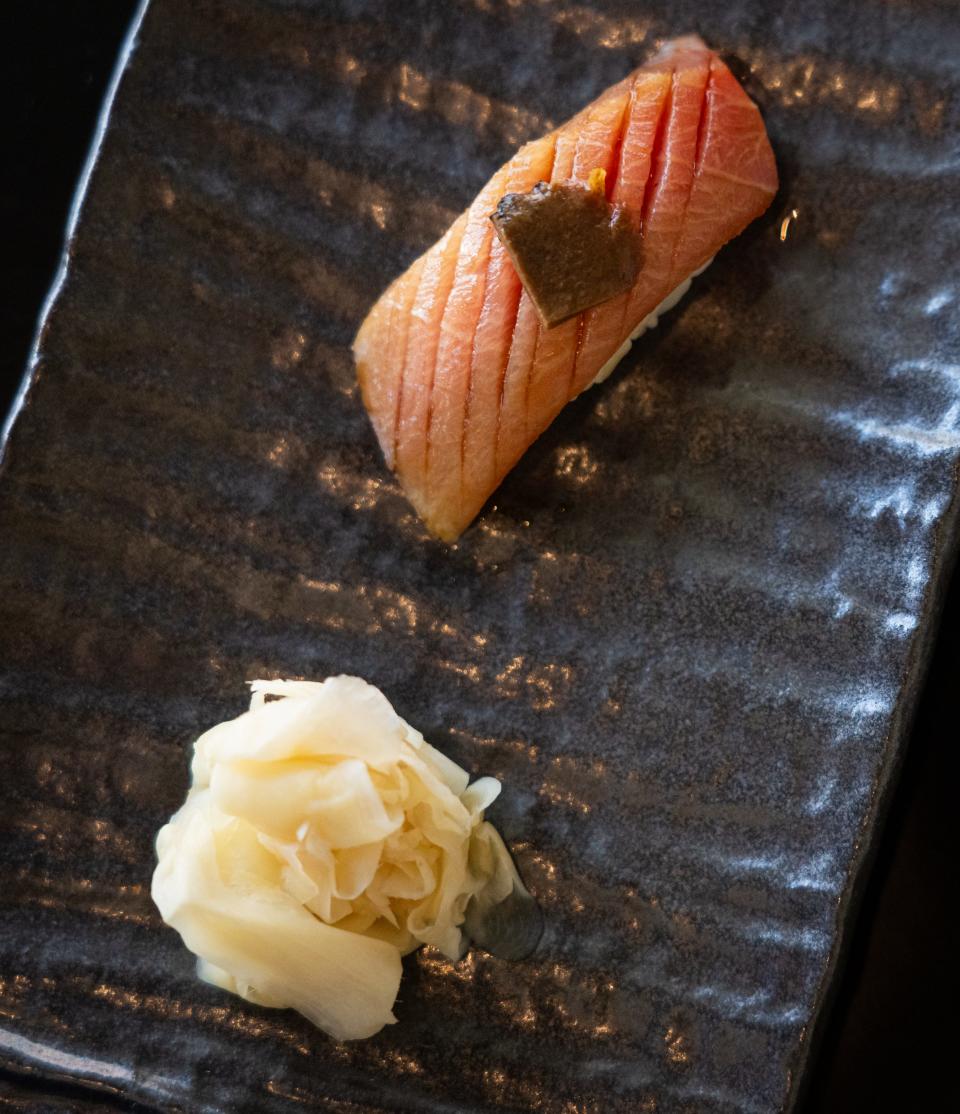
Tiny shreds of yukari and a swipe of honey yuzu vinegar lend a salty-sweetness to the purity of translucent madai (sea bream) on one piece, and ponzu and preserved Meyer lemon team for a citrus blast on impossibly tender mizudako (giant Pacific octopus).
The sushi chefs show classic restraint with their modest adornments that highlight the natural elegance and flavor of each piece, whether it be the soy and lime zest emboldening lithe hirame (fluke) or the punchy akakosho dabbed on a scored cylinder of Hokkaido scallop.
Textural touches are also used sparingly and to great effect, as with the crunchy furikake atop buttery masu (ocean trout) one night and a fish skin crumble the next. And each piece of fish is the perfect size, one easy bite but not small enough to make you ever question the restaurant’s value proposition.
The benefits of being small
The size of the operation (Craft Omakase feeds fewer guests in a week than a restaurant like Uchiko feeds in a few hours) means the restaurant has the space and time for preparations like curing, cold smoking and dry aging. Craft Omakase also benefits from being a small independent business, which gives them the flexibility to be nimble. When Wang decided that the flavor profile of his vinegar mixture used on his voluptuous rice was trending too sweet, which might suit more populist sensibilities, he dialed up the red vinegar to find the balance he wanted.
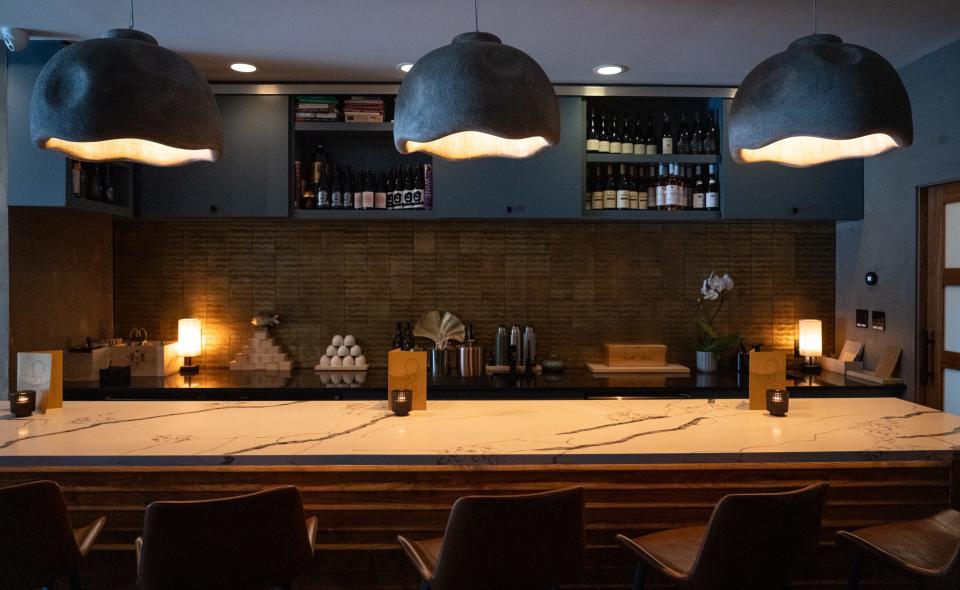
About half of the sushi offerings are dry aged and you can see an aging cabinet behind the chefs. There they will leave a piece of tuna for two weeks before sitting it in a long soy sauce bath, bringing out the natural essence of a sublime piece that will make you question whether akami (lean) is actually your favorite cut of the prized bluefin.
And, yes, there are extravagances, like the trout cooked sous vide in A5 Wagyu fat and the speckles of caviar mounded on bluefin otoro (belly). But those flourishes feel less like superfluous showmanship than studied flavor building.
Eighty percent of the fish at Craft comes from Japan, though the kitchen makes a few exceptions, like tuna from Baja or the pink shrimp used in an electric aguachile with Japanese sweet potato and leche de tigre. The international flavors or ingredients are kept to a minimum, as well, though usually are applied with purpose.
A dish of gai lan (Chinese broccoli), rich with brown butter and the tannic whispers of green tea, and the chili oil that shocks an umami bomb of bonito, nods to Shanghai native Wang’s heritage. Nguyen’s native Vietnam is present in the fish sauce found on pieces of kurodai (black snapper) and sawara (Spanish mackerel).
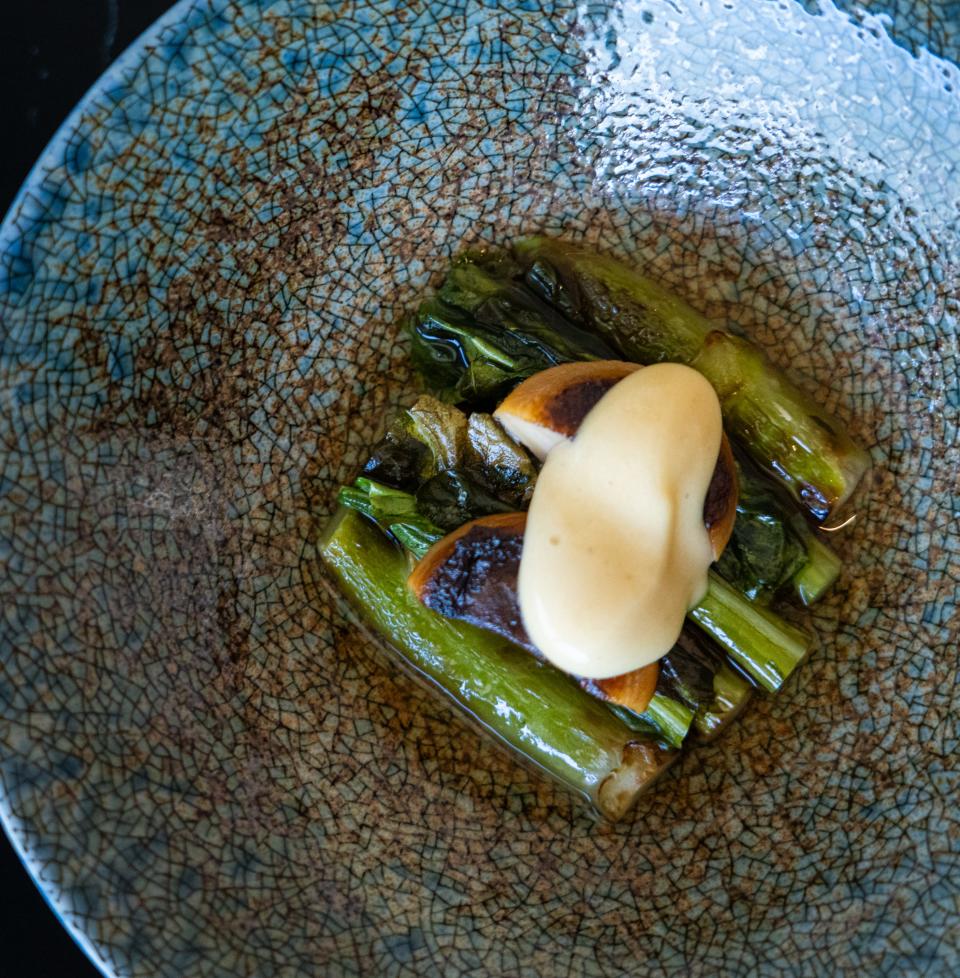
Discerning diners will likely pick up on those influences, but your experience at Craft in part depends on you. If you want to learn at Craft, the more your curiosity leads to questions the better. There’s not much explication going on, and the quick pace, as with almost all new omakases, can at times make you feel like you’re dining in a business model more than a restaurant. But if you slow down and savor what’s going on, you’ll be rewarded.
The folks at Craft aren’t interested in putting on a big spectacle. It’s a style that plays to a guest’s intelligence. The idea that you’re having a great meal doesn’t have to be reinforced or burned into your brain. You can taste it.
Information
4400 N. Lamar Blvd. Suite 102. 512-887-8889, craftomakase.com.
Rating: 9 out of 10
Seatings: 5:45 and 8 p.m. Wednesday, Thursday and Sunday; 5, 7:15 and 9:30 p.m. Friday and Saturday. Online reservations for four-week periods are released each Sunday at noon.
Cost: $175 plus $35 service charge and tax. Paid at time of online booking.
Highlights: Sea bream with honey yuzu vinegar; fluke with soy and lime; bluefin akami; hotate; ocean trout; tuna belly.
Expect to pay: $230 (Price per person before drinks.)
Notes: Free lot parking.
The Bottom Line: Craft Omakase is the best of the new crop of omakase sushi restaurants in town thanks to its sophistication, restraint and, well, craft.
More Austin restaurant news
Awards: Austin chef named James Beard finalist; three other Central Texas women also nominated
Reopened: Closed since 2022, one of downtown Austin’s best restaurants returns with new look, menu
Timely: 9 new restaurants to know in Austin
This article originally appeared on Austin American-Statesman: Craft Omakase is one of the best sushi restaurants in Austin

